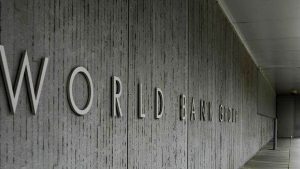THE Philippine economy is likely to grow at a sub-6% pace until 2027 amid an expected slowdown in global activity due to the shift in US trade policy, the World Bank said.
In a Macro Poverty Outlook report, the World Bank lowered its gross domestic product (GDP) forecast for the Philippines to 5.3% this year from a 6% projection issued in December, citing the likely slowdown in global activity.
It also forecast a 5.4% growth rate for 2026 followed by 5.5% in 2027.
These would all fall short the government’s 6-8% growth targets for this year until 2028, and below its revised 5.7% performance in 2024.
“Growth is projected to average 5.4% through 2027, anchored on private domestic demand,” the World Bank said.
“Safeguarding growth amid heightened external uncertainty and raising growth potential require reforms that strengthen climate resilience, increase investments, and boost productivity,” it added.
Secretary Arsenio M. Balisacan of the Department of Economic Planning and Development (DEPDev) has said that the lower end of the government’s target band is still “achievable” even in the face of global uncertainty.
The World Bank said US trade policy may hinder exports and manufacturing.
“Supportive macroeconomic policies and stronger domestic demand conditions underpin growth prospects. However, trade policy uncertainty could dampen trade and investment prospects,” it said.
US President Donald J. Trump announced a 17% tariff on goods imported from the Philippines, the second-lowest rate in Southeast Asia.
Mr. Trump later paused these tariffs for 90 days, but the baseline 10% tariff on almost all US imports remains in effect.
The Philippines exported $12.14 billion worth of goods to the US in 2024.
Mr. Balisacan has said that exports could possibly increase by 1.5% under the 10% tariff regime during the 90-day pause, as China grapples with a tariff of 125%.
The World Bank identified heightened trade policy uncertainty and its combined impact on global growth as main downside risks.
“Financial markets represent a related source of risk: prolonged uncertainty could trigger capital flight,” it said.
Meanwhile, improvements in domestic activity as inflation eases may bolster the upside.
“Coupled with a negative external demand shock, this could accelerate the path of monetary policy loosening, supporting private domestic demand,” the bank said.
The World Bank still expects Philippine growth to remain among the strongest in the region, driven by its positive outlook on private domestic demand.
According to its East Asia and Pacific (EAP) Economic Update report released on April 25, the Philippines is expected to become the second-fastest growing economy in Southeast Asia in 2025, behind Vietnam (5.8%).
The World Bank also expects domestic activity to benefit from a healthy labor market that will boost private consumption and services.
In the first quarter, inflation averaged 2.2%, well within the central bank’s 2-4% target range.
“Lower rice prices, and a more benign outlook for oil prices are expected to keep inflation contained. This is expected to alleviate pressure on households, potentially stimulating consumption growth,” it said.
This will also leave room for the Bangko Sentral ng Pilipinas (BSP) to lower interest rates further, the World Bank said.
The BSP paused its easing cycle in February but cut rates by 25 basis points at its April 10 meeting. This brought the target reverse repurchase rate to 5.5% from 5.75% previously.
“Meanwhile, investment growth will remain anchored on public infrastructure and the implementation of reforms that liberalized investment in key sectors,” it said.
The World Bank also projected private consumption — which accounts for around three-quarters of GDP — to grow by 5.2% this year, followed by increases to 5.4% in 2026 and 5.5% in 2027.
On the other hand, government consumption will likely grow 8% this year alone, followed by 7.1% in 2026 and 6.7% in 2027.
Infrastructure spending is also expected to exceed 5% growth over the medium term.
Meeting the government’s medium-term fiscal targets will require additional tax reforms and a commitment to reduce spending, it said. — Aubrey Rose A. Inosante

